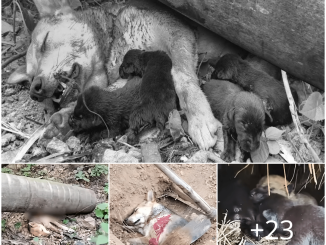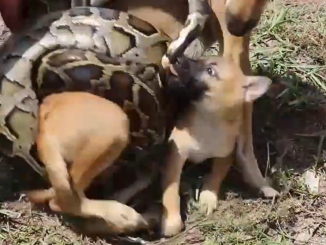Dogs’ brains are sensitive to the familiar high-pitched “cute” voice tone that adult humans, especially women, use to talk to babies, according to a new study.
The research, published recently in the journal Communications Biology, found “exciting similarities” between infant and dog brains during the processing of speech with such a high-pitched tone feature.
Humans tend to speak with a specific speech style characterised by exaggerated prosody, or patterns of stress and intonation in a language, when communicating with individuals having limited language competence.
Such speech has previously been found to be very important for the healthy cognitive, social and language development of children, who are also tuned to such a high-pitched voice.
But researchers, including those from the Eötvös Loránd University in Hungary, hoped to assess whether dog brains are also sensitive to this way of communication.
In the study, conscious family dogs were made to listen to dog, infant and adult-directed speech recorded from 12 women and men in real-life interactions.
As the dogs listened, their brain activities were measured using a functional magnetic resonance imaging (fMRI) scan.
The study found the sound-processing regions of the dogs’ brains responded more to dog- and infant-directed than adult-directed speech.
This marked the first neurological evidence that dog brains are tuned to speech directed specifically at them.
“Studying how dog brains process dog-directed speech is exciting, because it can help us understand how exaggerated prosody contributes to efficient speech processing in a nonhuman species skilled at relying on different speech cues,” explained Anna Gergely, co-first author of the study.
Scientists also found dog- and infant-directed speech sensitivity of dog brains was more pronounced when the speakers were women, and was affected by voice pitch and its variation.
These findings suggest the way we speak to dogs matters, and that their brain is specifically sensitive to the higher-pitched voice tone typical to the female voice.
“Remarkably, the voice tone patterns characterizing women’s dog-directed speech are not typically used in dog-dog communication – our results may thus serve evidence for a neural preference that dogs developed during their domestication,” said Anna Gábor, co-first author of the study.
“Dog brains’ increased sensitivity to dog-directed speech spoken by women specifically may be due to the fact that women more often speak to dogs with exaggerated prosody than men,” Dr Gabor said.

She Used to Cry a Lot After Enduring a Lot of Pain BUT Now She Truly The Pride of Her Family.

Amber has arrived! This morning, a kind soul saw her in a ditch in Lancaster County, South Carolina, a gray beauty torn apart by hideous brutality. Amber’s face was a terrible mess of bruises, infected beyond measure, necessitating quick reconstructive surgery.

Her nasal canal was torn as a result of the cruelty she was subjected to, leaving her gasping for air. Her suffering was compounded by a broken jaw and displaced teeth, and her once perfect nose was now torn apart. Due to the severity of her injuries, the medical team had to sedate her to perform a CT scan, which was unprecedented in their experience.


Amber, who was just two years old, had her whole life ahead of her despite her small body and severe malnutrition. She was sedated daily for nearly five days as committed specialists worked tirelessly to give her a new lease on life. Amber’s face has been repaired and her nasal passages cleared as a result of their steadfast commitment, but the swelling serves as a reminder of her grief.

Her beautiful demeanor was unaffected, a monument to her fortitude in the face of tragedy. Amber showed tremendous courage and love as she healed and faced the hardships of heartworm treatment and sterilization.

She relaxed after a filling lunch and finally cuddled into her blanket for a restful night’s sleep. Today, she went for a walk in her new neighborhood under the warm sunshine with her new siblings, Jack and Alice, clear evidence that she has found comfort and security in her new home.

Amber would like to express her deep gratitude to all of her amazing friends who supported her journey, thought of her as she embarked on her path to a better life, and loved her unconditionally.

Ember’s adventure can be followed on Instagram.



Leave a Reply